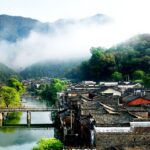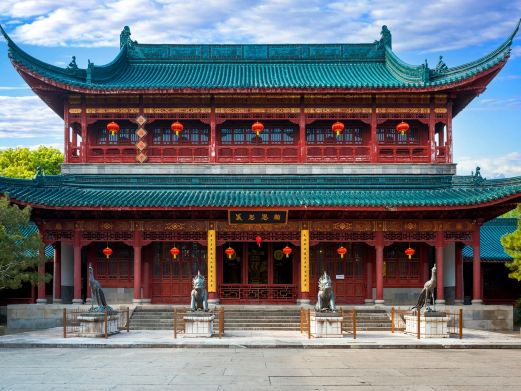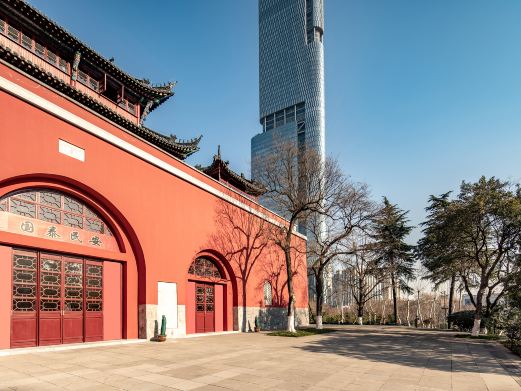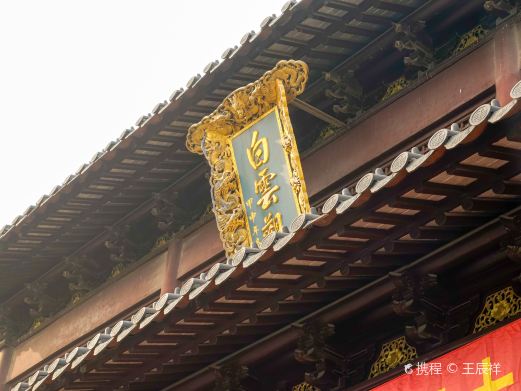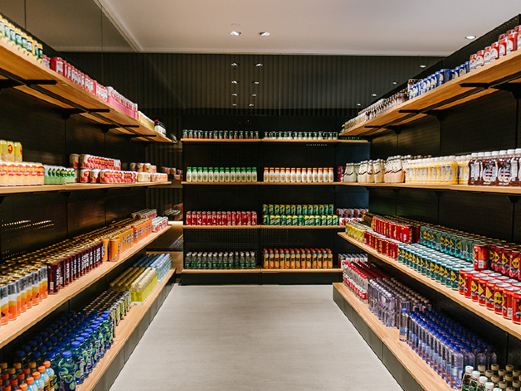Shanjuan Cave is located in the southwest of Yixing City and is a renowned limestone cave. Entering the cave feels like stepping into a vast underground palace, where one can admire exquisite stalactites and grand natural boulders, as well as an underground river flowing through the cave. The scenic area also features numerous cultural attractions related to the Liang Zhu cultural heritage, offering a rich variety of experiences.
Limestone caves are a specialty of Yixing, with the three famous caves being Shanjuan Cave, Zhanggong Cave, and Linggu Cave. Among them, Shanjuan Cave is representative and opened to tourists as early as 1934, making it one of the earliest caves in China to be developed for tourism. Upon entering the scenic area, visitors will see a statue of Shanjuan, a poet from the time of Emperor Shun, who gained the name “Shanjuan Cave” for his hermitage in this cave. Walking from the scenic area’s gate tower towards Shanjuan Cave, one will pass through the Wild Valley, where “wild man performances” are held periodically, featuring actors dressed as wild men performing fire-breathing and hair-swinging dances, although sometimes these performances are scheduled for when there are more tourists.Shanjuan Cave is composed of upper, middle, lower, and water caves, each connected yet offering distinct views. Visitors can take a boat tour in the water cave, which is quite interesting. The middle cave serves as the entrance to Shanjuan Cave and is a naturally formed grand stone hall, magnificent and awe-inspiring. On both sides of the stone hall, there are huge stones resembling a green lion and a white elephant, vivid and majestic, hence the middle cave is also known as the “Lion and Elephant Plaza.
” The upper cave has peculiar stones standing on the walls, forming landscapes such as “Lotus Reflection,” “Black Dragon Spraying Water,” and “Golden Rooster Standing Alone,” while inside the cave, gentle streams converge into numerous pools and ponds, with “Empress Nuwa Pond” and “Pangu Pond” being the deepest. Due to the frequent clouds and mist inside the cave, it is also called the “Cloud and Mist Plaza. ” The “Tiger Hall” in the movie “Wisdom Captures the Tiger Mountain” and the “Yellow Wind Cave” in the eighth episode of “Journey to the West” were filmed here. The lower cave, also known as “Another Day,” features a narrow and elongated space with cascading waterfalls pouring down from the cliffs, vigorous and passionate. The stalactites in the lower cave are also different from those in the upper and middle caves, resembling bananas or lotuses in various shapes. There are also landscapes such as the “Heaven-Piercing Stone Pine,” “Nine-Tiered Pond,” “Old Longevity Star,” and “Cave Mansion” in the lower cave.
The water cave is a 120-meter-long underground river, where boat trips allow visitors to experience “rowing a boat inside a cave, with oars pointing upwards.” The water here meanders deep and serene, with colorful lights reflecting on the water, creating a resplendent scene as if in a crystal palace. There is a legend from the Zhou Dynasty that a white dragon was hidden in the water cave, and during the Three Kingdoms period, King Sun Hao of Wu also consecrated and erected a stele for it.

Then, you can take the sightseeing cable car to go up the mountain and view the ‘Guoshan Stele’, which was erected by Sun Hao, the fourth monarch of the State of Wu during the Three Kingdoms period. There is also a Yuantong Pavilion on the mountain. Inside, there are fifty-three purple clay Guanyin hanging carvings, which can be called a unique wonder in the world. Then you can take the slide to go down the mountain and visit the purple clay collection exhibition hall in the pottery bar.
Here you can also make pottery products with clay by yourself and take your works away. However, if you want to mount your works, you need to pay extra. There are basically few restaurants in the scenic area. There is a hotel ‘Luoyan Mountain Villa’ at the exit of the scenic area that can provide meals and accommodation. However, you can also go back to the urban area for meals. If you are driving, you can go to Zhangzhu Town, five kilometers southwest of the scenic area, to eat farmhouse dishes, which is more convenient and affordable.
Opening hours: Open all year round from 08:00 to 16:30.




